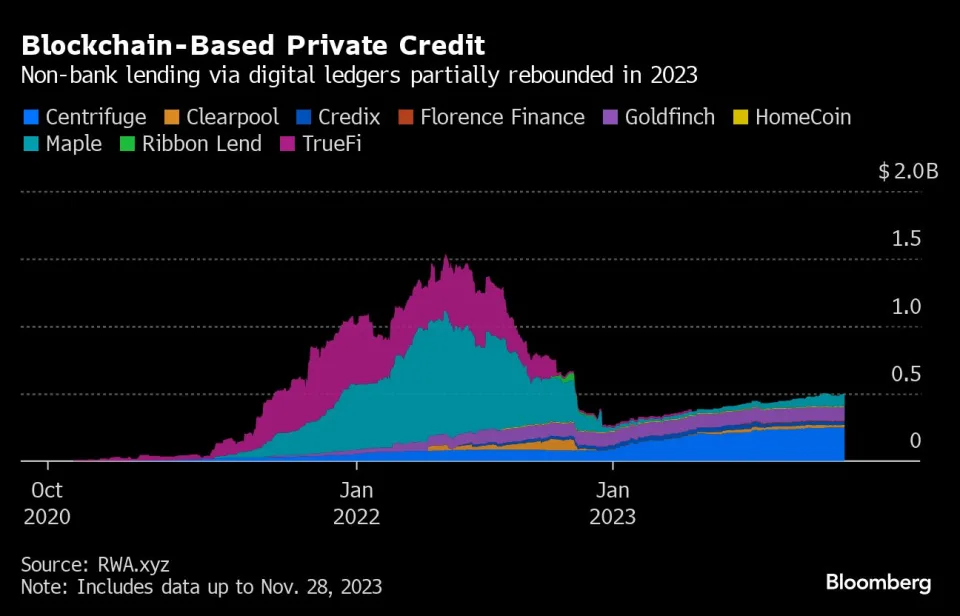
Active private loans via digital ledgers are up 55% since the start of 2023 to about $408 million as of Nov. 28, according to RWA.xyz, a platform that tracks the debt. That’s still lower than a near $1.5 billion peak last June — and a fraction of the booming $1.6 trillion traditional market for private credit.
While borrowing costs vary deal-by-deal, some blockchain protocols charge less than 10% whereas traditional providers are seeking double-digit rates in the current environment, based on figures from RWA.xyz and private-credit lenders.
Champions of digital ledgers say they make deals and repayments transparent since blockchains are open to public scrutiny, and that software called smart contracts can monitor for stress and automatically recall loans or collateral.
“Increased transparency and liquidation mechanisms onchain have reduced the risk of lending,” said Agost Makszin, co-founder of Lendary (Asia) Capital, an alternative investment management group. “This has likely resulted in lower borrowing rates compared with traditional private credit, which is often slower and has a longer liquidation process.”
Traditional private credit has been labeled too opaque by the likes of bond giant Pimco and the European Central Bank. The industry has tripled in size since 2015, providing loans for smaller companies, buyout financing, real estate and infrastructure. Investors are clamoring for exposure to the asset class.








Comments (0)